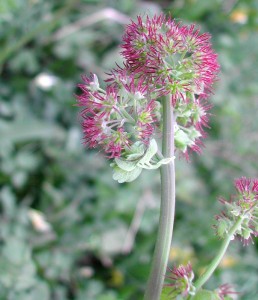
News/Reports
Mount Sabine ER #19
Physical:
The reserve is situated on gently sloping terrain just north of the summit of Mount Sabine, which marks the southern extremity of the Stanford Range. It has a slight slope to the northwest. Local soils, developed on morainal material which has a limestone component, are believed to be Brunisols. Climate is somewhat cooler and moister in the reserve than on the floor of the adjacent Rocky Mountain Trench 600 m below.
This is extracted from the Original Purpose Statement File
of BC Parks: PDF:sabine(2)
Biological:
Forests here typically consist of a mixture of western larch, Douglas-fir, Engelmann spruce and lodgepole pine in roughly equal proportions. Subalpine fir may be co-dominant in some areas, and paper birch is also present. The tallest trees are western larch, up to about 25 m tall and perhaps 120 years in age. Conifer regeneration includes Engelmann spruce, subalpine fir and Douglas-fir. These woodlands have a rather sparse shrub layer containing species such as soopolallie, western snowberry, Douglas maple, creeping Oregon-grape (aka low Oregon-grape), Utah twinberry (aka red twinberry), prickly rose and Saskatoon. Ground cover is dominated by showy aster, pinegrass and mosses. Other typical herbs include western meadowrue, twinflower, prince’s pine, one-sided wintergreen, green wintergreen, rattlesnake-plantain, violets, northern bedstraw, wild strawberry, red columbine, rough-fruited fairybells and heart-leaved arnica.
Conifer regeneration includes Engelmann spruce, subalpine fir and Douglas-fir. These woodlands have a rather sparse shrub layer containing species such as soopolallie, western snowberry, Douglas maple, creeping Oregon-grape (aka low Oregon-grape), Utah twinberry (aka red twinberry), prickly rose and Saskatoon. Ground cover is dominated by showy aster, pinegrass and mosses. Other typical herbs include western meadowrue, twinflower, prince’s pine, one-sided wintergreen, green wintergreen, rattlesnake-plantain, violets, northern bedstraw, wild strawberry, red columbine, rough-fruited fairybells and heart-leaved arnica.
The fauna has not been surveyed. Mule and White-tailed Deer and Elk occur in the area, as well as a variety of smaller mammals and birds.
Photo western meadowrue by Ian Cumming
